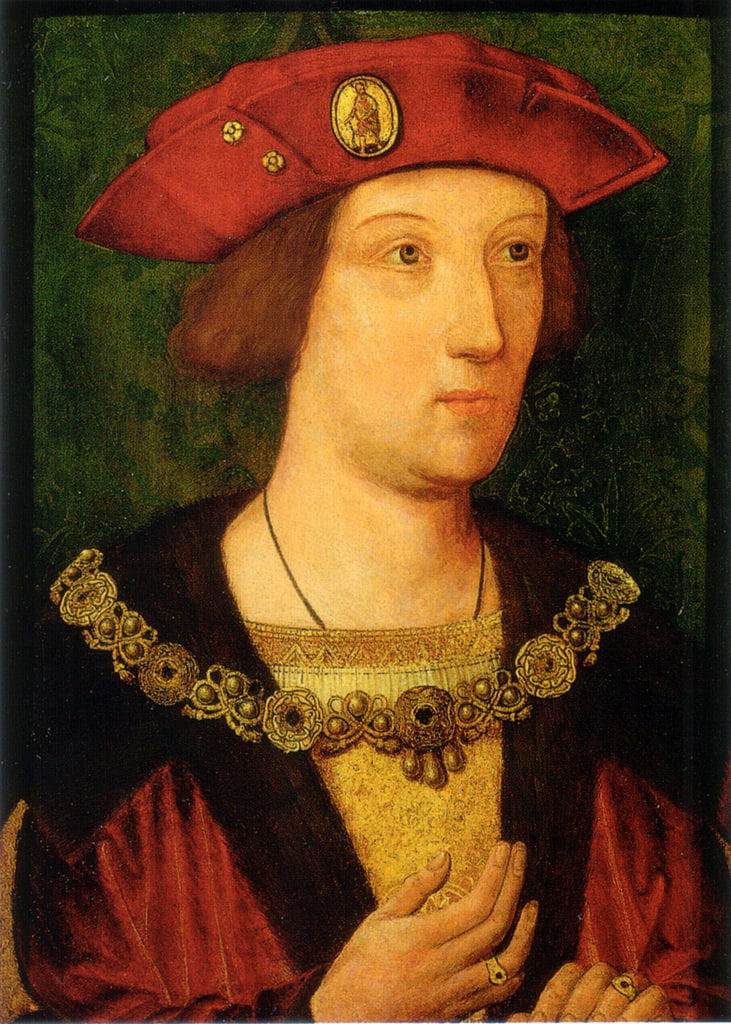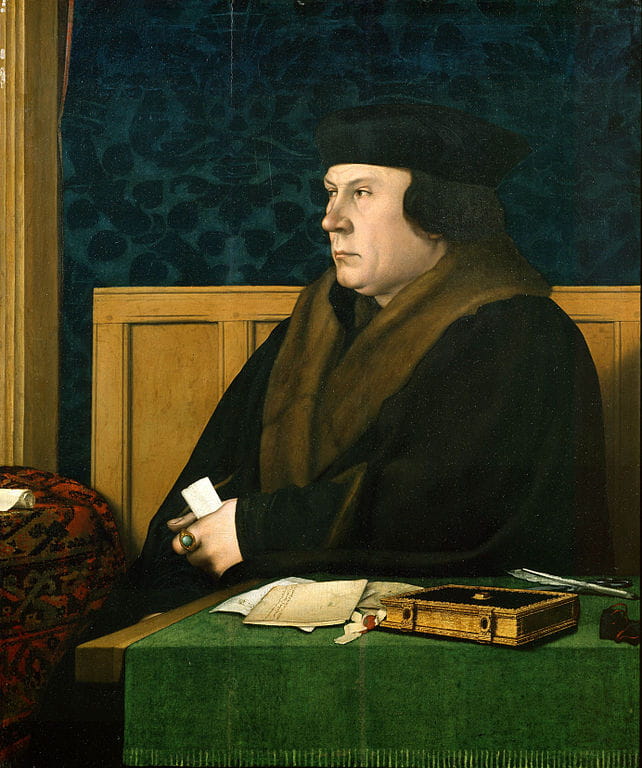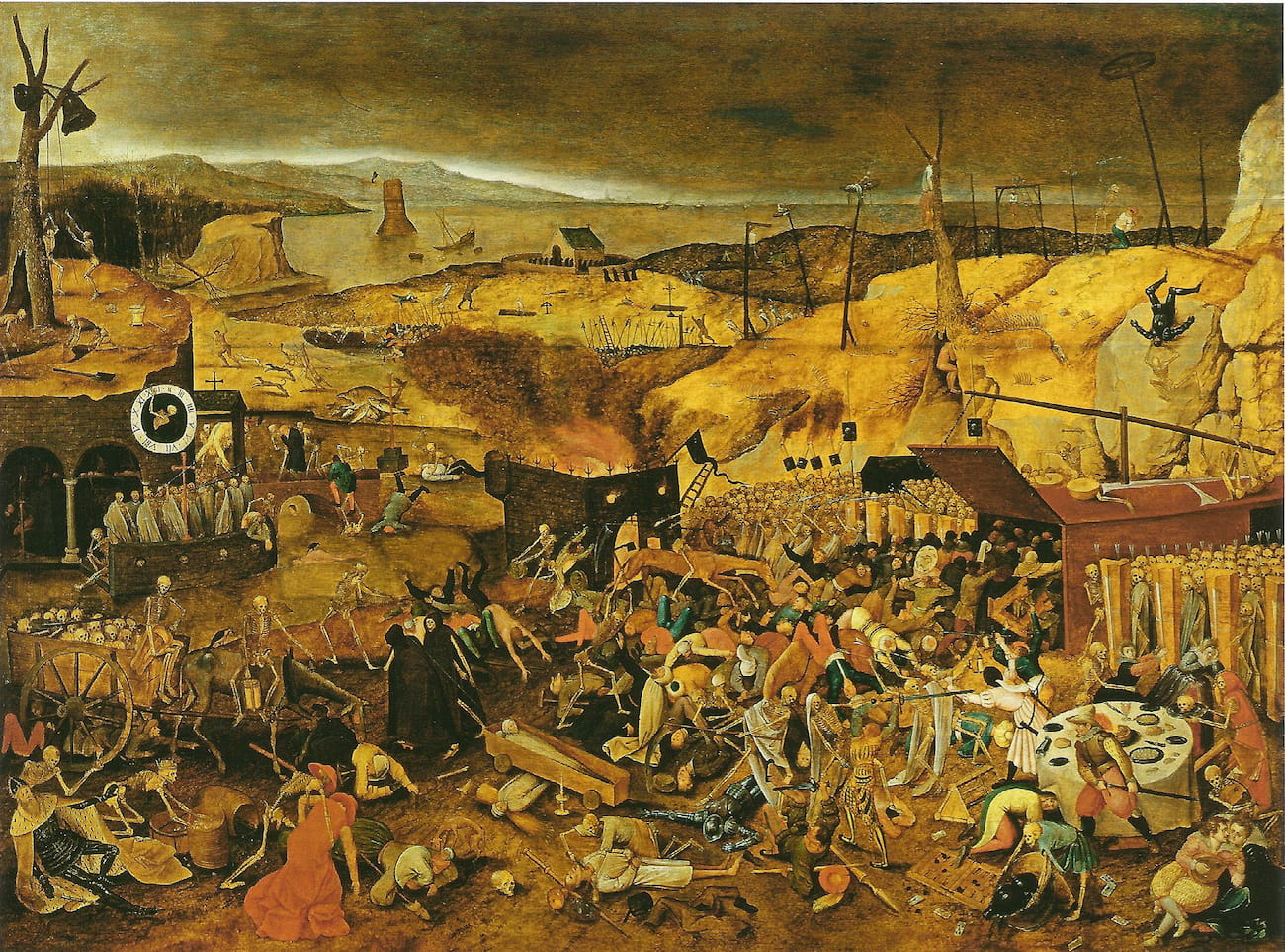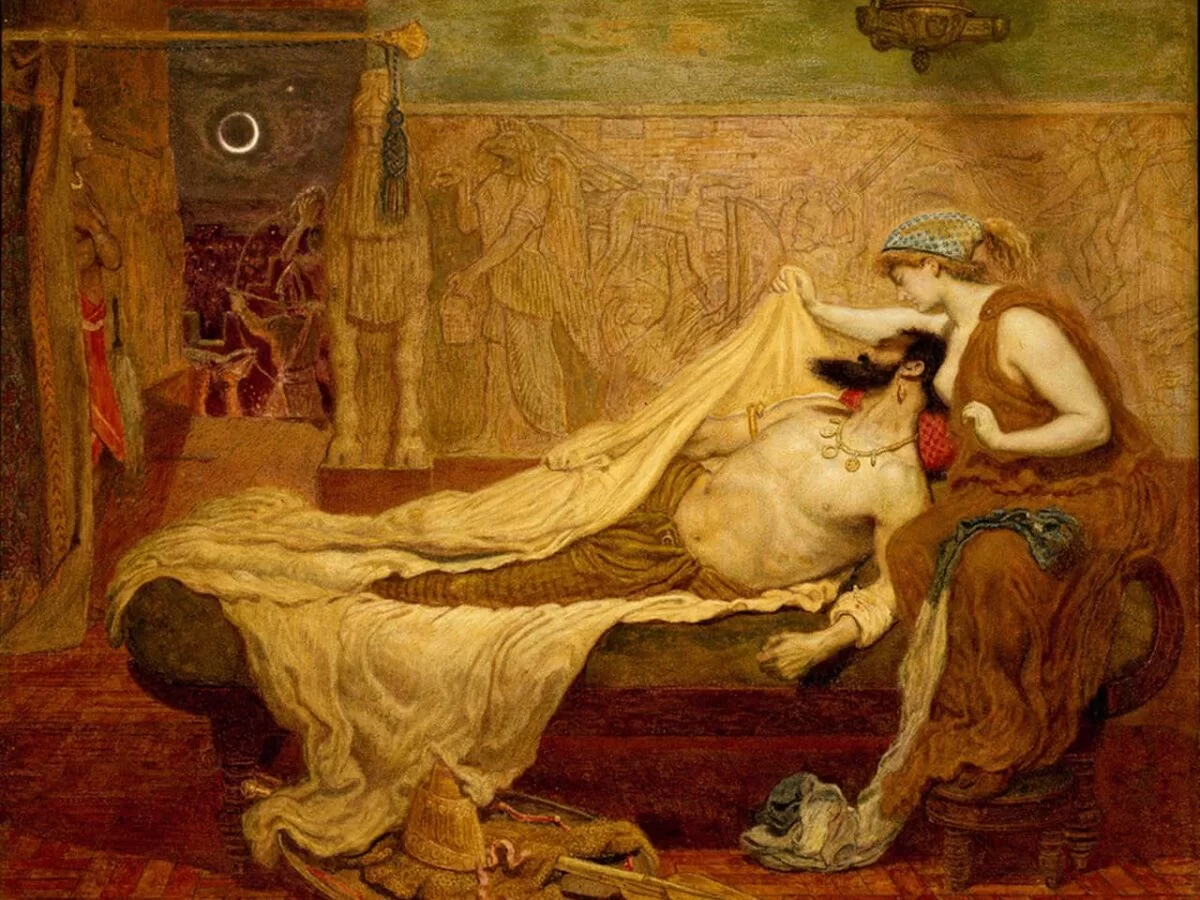It seemed like flu, but it was much faster and deadlier because it killed the patient within a few hours; it has been compared to relapsing fever, but that, caused by tick or louse bites, causes a local black crust that was not present in this case; there is speculation about an infection by hantavirus, even though these do not suddenly disappear, as happened then. We are talking about an enigmatic disease that devastated England in several waves between the 15th and 16th centuries, and which disappeared as mysteriously as it arrived. It was called “English Sweat” (also “Sweating sickness” and “sudor anglicus”) due to the intense sweating that was its most visible symptom.
The first recorded appearance was in August 1485, possibly in Milford Haven. Both the date and the place are significant, as that month saw the Battle of Bosworth in the context of the War of the Roses, which pitted the houses of York and Lancaster against each other for the throne of England. As is known, the outcome of that clash resulted in the defeat of the former and the death of its representative, King Richard III. His victorious rival succeeded him under the name Henry VII, founding the Tudor dynasty.
The battle took place in Leicestershire, near Sutton Cheney and Market Bosworth, but Henry’s army had landed earlier in Milford Haven, a town in his native county of Pembrokeshire. There is no evidence that the soldiers introduced the disease, although some historians suggest this may have been the case (Henry had hired French mercenaries, who may have been immune but could transmit the disease), speculating that Richard’s insomnia and thirst the night before the battle could have been symptoms of infection.

In fact, the first known case might have occurred a little earlier, in June, in the city of York. This was when, as recounted in the Croyland Chronicle (a chronicle written in the homonymous abbey in Lincolnshire, possibly by an anonymous monk or by John Rusell, who was then Bishop of Lincoln and had previously been Lord Chancellor under Richard III before falling out of favor and perhaps trying to ingratiate himself with Henry VII), Thomas Stanley, the first Earl of Derby, claimed to suffer from the “sweating sickness” and thus avoided joining the royal army ahead of the impending battle.
In any case, if the “English Sweat” had already arrived, it had not yet manifested significantly, as there are no reports of troops suffering from it, so it would have affected only a few individuals at that point. However, it soon began to wreak havoc, coinciding with the coronation of the new king. If he was already proclaimed on the spot at the battlefield itself on August 22, six days later he triumphantly entered London; at the same time, unknowingly, the viruses began to do their work, and by September 19, possibly spurred by the crowd gathered for the coronation, an epidemic could already be spoken of.
Of extreme severity, moreover, because when it finally ended, in late autumn (the most conducive season, along with summer), it had caused thousands of deaths. Curiously, the vast majority of the victims were adult males, predominantly in the age range of thirty to forty years, with little difference between social classes, as evidenced by the fact that among the deceased were, according to records, two mayors, six councilors, and three bailiffs (hence the disease became commonly referred to as “stoop gallant”). Women were less affected, while children and babies seemed immune.

An exception to this were adolescents. For example, the sons of the Duke of Suffolk, who perished an hour apart, or Arthur, Henry’s eldest son. Married in 1499 to Catherine of Aragon (the daughter of the Catholic Monarchs), he was sent to govern Wales and “a malignant vapor that proceeds from the air” caused both of them to fall ill, but she survived and he died. The year this happened, 1502, coincides with the second historical outbreak, and the textual reference resembles that left by the physician Thomas Forestier in a study he conducted in 1485, describing “repugnant vapors” concentrated around the heart and lungs, hindering breathing and leading to death very quickly.
The lack of exact data does not clarify whether Arthur’s death was due to the “English Sweat” or another illness such as plague, tuberculosis, or flu – not to mention that Arthur had been in poor health since birth – but it cannot be ruled out either. However, the symptoms of plague, for example, were very different and allowed doctors to identify it quite accurately. In contrast, this new disease had its own rapid and distinctive characteristics: the patient quickly became covered in profuse sweating and died within a maximum of twenty-four hours; survival beyond that time was rare.
Of course, the contextual circumstances led to the spread of the idea that it was a divine punishment motivated by the usurpation of the throne. But the medicine of the time sought to document the problem, with John Caius, a doctor who had graduated from the University of Padua studying with Vesalius and Montano, leaving the best and most detailed report. It was in his work A Boke or Counseill Against the Disease Commonly Called the Sweate, or Sweatyng Sicknesse, which he published in 1552 about the outbreak that devastated Shrewsbury the previous year.

Caius, who would become the personal physician to Queens Mary Tudor and Elizabeth I, explained that it all started with a feeling of apprehension followed by more or less violent chills, dizziness, and exhaustion, combined with headaches, neck, shoulder, and limb pain. This stage, which he called cold, lasted between half an hour and three hours, then passing to the hot stage, in which a sensation of heat gave way to abundant sweating, the pulse quickened, thirst appeared, and pains in the head and chest intensified; sometimes there were also nosebleeds. The patient began to delirium and felt a deep sleep, which Caius considered fatal and necessary to avoid.
If the patient did not improve after this time, between four and twelve hours, death was almost certain; on the contrary, if they did not die then they would probably improve. The bad thing was that having gone through such a terrible experience did not guarantee anyone immunity and there were many cases where someone who had suffered from sudor anglicus before contracted it again, even more than once, until finally succumbing. And, worst of all, there was no remedy; it was nature that decided the fate.
Richard Grafton, royal printer and chronicler, published a book in 1568 about the first outbreak—the one in 1485—titled Grafton’s Chronicle: or History of England, in which he explained that the only applicable treatment was to lay the patient down as soon as a symptom was perceived, keeping them immobile in bed without food, only with water, until the disastrous period of twenty-four hours had passed. As can be seen, little could be done to face something so serious, although it is true that the same happened with many other diseases and, anyway, sometimes the remedies were counterproductive.
Apart from scientific works, historical chronicles also documented the topic. For example, the Annals of Ulster (a chronicle of Ireland in Gaelic and Latin that spans from the year 431 to 1540) and the Annals of Connacht (a chronicle that covers Irish history from 1224 to 1544) recorded how the pláigh allais (“sweating plague”) ended the life of James Fleming, Baron of Slane; the Annals of the Four Masters (whose chronological scope goes from the Universal Flood to 1616) did the same with the incidence of the epidemic in the Irish county of Meath, documenting that it did not affect the child population.

As can be deduced from what has been said so far, there were several outbreaks after the initial one in 1485, with the second arriving in 1502. The next occurred in 1507 and was milder. But the one in 1517 was very virulent and, judging by foreign testimonies such as that of the Venetian ambassador, seemed to affect the English especially. This curious fact was confirmed in 1528, as it started in Calais (which is in French territory but then belonged to England) without spreading to the rest of France.
In 1529 London suffered a new very severe outbreak that forced Henry VIII to dissolve the court and change residence periodically. Prime Minister Thomas Cromwell lost his family (wife and two daughters) and other courtiers fell ill. Letters the monarch wrote to Anne Boleyn indicate that the monarch believed she was also infected, which is why he sent one of his personal doctors to her; as we know, she survived in the end, as did another illustrious contemporary, Cardinal Wolsey.
The epidemic stopped in the northern half of England; Scotland was spared, but not Ireland, where the most notable victim was Lord Chancellor Hugh Inge. Nor could it be prevented from jumping to Hamburg by one of the ships arriving at its important commercial port; the human cost was a thousand deaths in just one week. Then it spread from England to the entire Baltic coast, both towards Scandinavia and to the southwest, affecting cities such as Strasbourg, Frankfurt, Cologne, Marburg, Göttingen, Antwerp, and Amsterdam. Southern Europe was spared, except for the Swiss Confederation.

In general, these epidemics were as deadly as they were short-lived: they lasted on average less than two weeks and then disappeared as suddenly as they had appeared. The continent did not suffer from them again, limiting subsequent occurrences to English soil, although it is possible, according to burial records, that there were minor outbreaks in small European towns. This might have been the case with the next significant outbreak, which occurred in Shrewsbury in April 1551. It killed a thousand people before spreading to the rest of the country and abruptly disappearing six months later.
In 1644, a merchant and antiquarian named Martin Dunsford, a militant of the Dissenters (a Protestant religious group against state interference in the Church typical of Anglicanism), published a book titled Memoirs of the Town and Parish of Tiverton in which he recorded the incidence of an outbreak in his locality that killed nearly half a thousand residents. But this is an exception because there is no record of significant new cases after 1578, unless a very similar disease that appeared occasionally in France, Italy, and southern Germany much later, between 1718 and 1947, is considered as sudor anglicus.
Known as suette de Picardie (sweat of Picardy), it presented similar symptoms (high sweating, fever…), but had a higher outbreak rate and was not as deadly. Additionally, it included a novelty: the appearance of miliaria, a vesicular dermatitis (with pustules due to the accumulation of sweat in the eccrine ducts), for which some experts propose an explanation: the English cases described by Caius were so fulminant—remember, a few hours—that there was no time for these skin eruptions to appear.

On the other hand, the suette de Picardie—better documented as it is more recent and lasted until the 20th century—like the English sweat, especially affected the rural world and thus individuals who slept on or near the ground, which would be an indication that transmission could be through rodent fleas; in fact, that was the conclusion reached by the scientific commission that investigated an outbreak that sickened six thousand people in 1906. If extrapolated, it can be compared to sudor anglicus, then the pathogen transmitted by fleas, lice, and ticks needs to be determined.
And there are no certainties, as of today. The autopsy performed on Prince Arthur in 2002 could not specify the causes of his death and there are no analyses of other affected bodies. The fact that outbreaks usually occurred in summer led to theories about bacterial infections from wastewater and poor hygiene of other times, but that does not explain why children did not suffer from the illness and not all the symptoms match; another possibility would be the overlap of more than one disease, which is feasible.
The summer frequency could also point to relapsing fever, caused by Borrelia bacteria transmitted by lice and ticks. Its symptoms coincide with those of the English sweat, especially the sudden onset of fever, profuse sweating, and muscle and head pain, as well as improvement after twenty-four hours… The problem is that parasites inoculate the bacteria through bites, and it is not recorded that patients had eczema or bite marks on the skin.

Rye ergot is also not accepted as a hypothesis since that cereal often caused diseases in continental Europe but was very scarce in England. It is not demonstrable at the moment, as another theory suggests, that it was a case of poisoning by anthrax spores—present in animal carcasses or raw wool—while bodies of victims who certainly died of English sweat are not exhumed for analysis.
Therefore, the information provided by the suette de Picardie offers more accepted clues. Rodent parasites typically transmit hantaviruses, a type of virus from the Hantaviridae family that spreads through zoonosis (from animal to human by saliva, excretions, and bites) and usually produces two types of conditions: hemorrhagic fever with renal syndrome (HFRS) and hantavirus pulmonary syndrome (HPS). The symptoms more or less coincide with those of the sudor anglicus—including the low or nonexistent incidence in children—and the mortality rate is also between thirty and forty percent of those infected, with no effective treatment.
Given the hantaviruses’ ability to mutate, possibly the one that caused the historical outbreaks was not exactly the same as the current ones, since these do not disappear in a couple of weeks as those did, nor are they usually transmitted from person to person (although it would be necessary to see if the descriptions of Caius and others are entirely accurate). Something similar, except for the route of contagion, could be said if it had been an influenza virus, the cause of the flu, which is another simple but lethal possibility. The world of microbes, including those from other times, still jealously guards its secrets.
This article was first published on our Spanish Edition on June 28, 2024: Sudor inglés, la enigmática y letal enfermedad que asoló Inglaterra entre los siglos XV y XVI y desapareció tan misteriosamente como llegó
SOURCES
J.F.C. Hecker, The epidemics on the Middle Ages
Stephen Porter, The Sweating Sickness epidemic. Henry VIII’s great fear
Paul Heyman, Leopold Simons y Christel Cochez, Were the English Sweating Sickness and the Picardy Sweat Caused by Hantaviruses?
Charles Creighton, A history of epidemics in Britain
Encyclopædia Britannica, Sweating-Sickness
Wikipedia, Sudor inglés
Discover more from LBV Magazine English Edition
Subscribe to get the latest posts sent to your email.




















